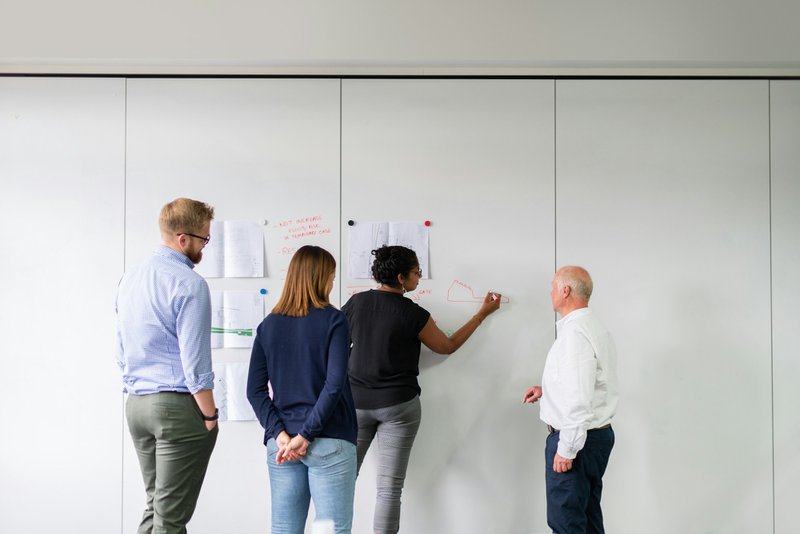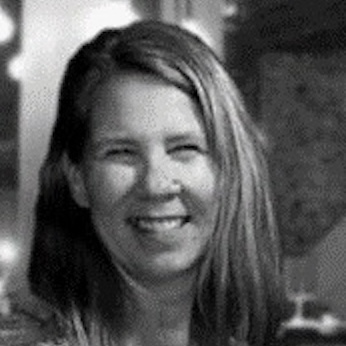
April 12, 2024
Tips For Bridging The Communication Gap With Your Software Developer
App ideas can formulate from anyplace, to anyone. They may appear unexpectedly or with intent. They also don’t discriminate; they hit people of all experiences, education levels, and without regard to technical background.
That’s why Flint Hill Group development teams, like other software developers, often find themselves interacting with non-technical people who have great ideas for software applications. We know all customers aren’t well-versed in the technical nomenclature that distinguishes software development. We also know how to help bridge that gap.
Trust Your Development Team’s Process
While you may feel overwhelmed at the thought of trying to effectively communicate to your software developer, know that experienced developers are used to translating an idea outlined in laymen’s terms into a development blueprint. In fact, at Flint Hills Group we’ve developed a straightforward but customizable process we use to help organize those eagerly conveyed ideas into an executable application roadmap. According to CEO, Dave Cunningham, FHG’s three primary steps are:
- Recorded Zoom call we can draw on later for reference or additional clarity.
- Pull in a UI/UX (User Interface/User Experience) specialist to help translate ideas into a low-resolution mockup.
- Develop an acronym and terminology guide relevant to both parties, i.e., a list of technical terms we use to help our customer understand what we’re discussing, and in turn, ask them to create a list of their own terms relevant to their industry and profession.
During this process, the UI/UX specialist will ask you questions about what features the application needs to have, what types of users you’re targeting, and other relevant questions particular to your end product.
On your end, there are concrete steps that you, the non-technical customer, can take to help prepare for this process and your desired outcome.


Start with Your Objective
As a UI/UX developer at FHG, Rus Anderson, goes into the process with an expectation that the customer’s enthusiasm may overshadow a clear description of their proposed app’s intent.
“They are excited to share their ideas and their words often get ahead of their thoughts,” said Anderson. “I try to get them to describe the primary purpose of their app in one sentence. What is the problem they are trying to solve? How is it intended to benefit the user?”
Practice articulating this purpose so that the developers have a clear understanding of your desired outcomes.
Focusing on one key objective with your idea allows you to work towards creating a Minimum Viable Product (MVP) as a first release. Creating an MVP is crucial as it allows teams to validate their ideas, gather user feedback, and iterate based on real-world usage, ultimately saving time and resources while ensuring the development of a product that meets actual market needs.
Learn Basic Terminology
If your developer doesn’t develop a list of relevant terms for you, as FHG does, then search for some on your own or ask for a resource. No one expects you to become an expert, but familiarizing yourself with basic technical terminology can facilitate productivity. At a minimum, work to grasp key concepts such as:
- User Interface (UI)
- User Experience (UX)
- MVP (Minimal Viable Product)
- Scrum
- Sprint
This basic knowledge enables you to articulate more precisely and better understand the developer’s feedback.
Provide Detailed Use Cases
What are some specific scenarios or use cases that demonstrate how users will interact with the software? Break down the process as much as possible into step-by-step sequences, highlighting desired outcomes at each stage. This helps developers understand what is called “the user journey,” allowing them to tailor the development process accordingly.
As you’re detailing the use cases, prioritize your envisioned features and functionality: Identify the core features and functionalities you see as being essential to your app’s initial version, then prioritize them based on their importance and the potential impact on the user experience.


Visual Aids
If you have the ability to illustrate your concepts visually, send them along! Explore user-friendly platforms like Canva or even a paper and pen to create simple designs without requiring any coding knowledge. Your UI/UX specialist will develop wireframes of their own, but any visual representation you can provide can help bring clarity that words alone may not provide.
However… if you are not graphically inclined, don’t fret! Once you see a draft wireframe, you can provide helpful feedback on the specialist’s visual renditions of your idea.
Ask Questions and Seek Clarification
Don’t hesitate to ask questions if you don’t understand certain terms or concepts. Developers appreciate proactive communication because it saves time and offers clarification that ensures alignment between your vision and the development process.
Provide Feedback Throughout the Development Cycle
Stay actively engaged throughout the development cycle and provide feedback at various milestones. Test any prototypes and share whatever ideas you have for revisions or enhancements. Even if your suggestions aren’t workable, this early communication fosters collaboration and can reduce the likelihood of having to make changes later.


Be Open to Compromise
As mentioned above, some of your ideas and suggestions may not be workable, for one reason or another. That’s why collaboration is important, so be open to ideas regarding technical feasibility, best practices, and alternative solutions. A flexible mindset fosters a constructive working relationship and leads to better outcomes.
Finally, embrace any project management tools your team may be using, like Email, Slack, Gitlab or Trello. They help keep you in the loop and preserve a record of requirements, decisions and discussions, providing you both with clarity and any necessary reference points to minimize misunderstandings and promote accountability.
Ready to Bring That Idea to Life?
Now that you have a clearer roadmap to help you get started, it’s time to select your team! At FHG, we pride ourselves on turning the daunting into doable, and we’re ready to celebrate the achievements and milestones of the process with you. Effective communication is truly the bridge to help teams move from ideation to creation.


Karen S Johnson
Technology Enthusiast
Karen S. Johnson is a freelance writer, public relations consultant and technology enthusiast who traded farm life in North Dakota for a smaller-scale farm outside of Waco, Texas. When not writing articles and crafting messaging strategies for technology clients, Karen can usually be found jumping her horses around her 20-acre farm or watching the spectacular sunsets with her husband, dogs and cats.
Karen S. Johnson
Technology Enthusiast
Karen S. Johnson is a freelance writer, public relations consultant and technology enthusiast who traded farm life in North Dakota for a smaller-scale farm outside of Waco, Texas. When not writing articles and crafting messaging strategies for technology clients, Karen can usually be found jumping her horses around her 20-acre farm or watching the spectacular sunsets with her husband, dogs and cats.



